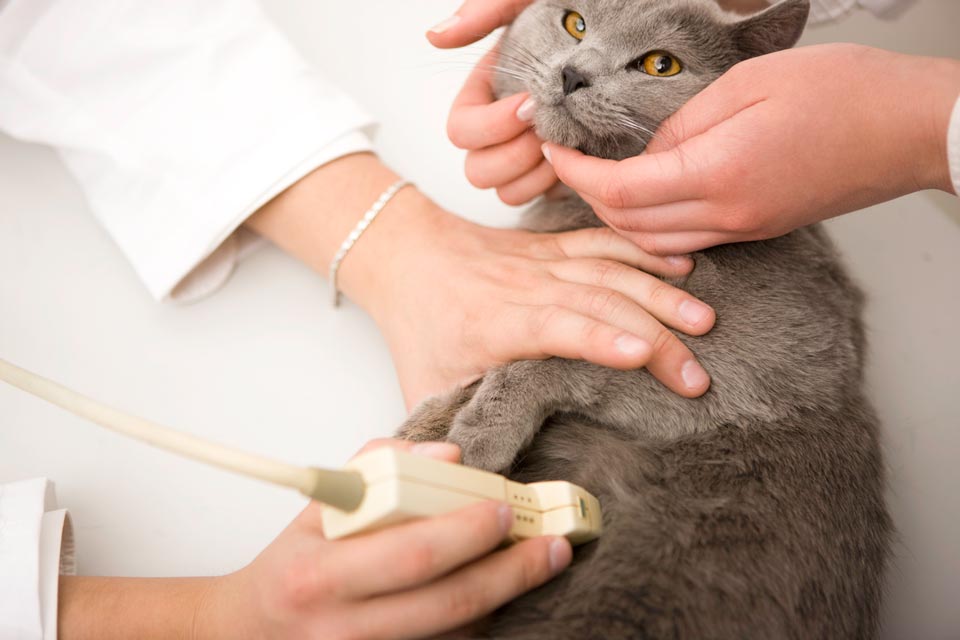Ultrasound in Cats

Ultrasound is a test that can be done to help veterinarians diagnose certain conditions in cats. It uses a machine to send high-frequency sound waves through the cat's body. The way different structures in the body absorb and reflect the sound waves is translated onto an image that can be studied by the veterinarian.
Which Feline Body Structures Can Ultrasound Help Examine?
In cats, ultrasound is often used for:
- Diagnosing pregnancy and counting kittens
- Looking at the heart (this type of ultrasound is called echocardiography)
- Evaluating kidney and liver problems
-
Diagnosing bladder conditions
- Guiding placement of a needle into an abdominal structure to obtain fine needle aspiration samples or to get a urine sample directly from the bladder
Bones and air stop ultrasound waves, so the lungs, brain, and spinal cord generally can't be examined using this technology.
How Is an Ultrasound Performed on a Cat?
When an ultrasound is done on a cat, the kitty is usually gently restrained on a table. The area in need of ultrasound is shaved, and a special gel that improves the transmission of the sound waves is placed on the skin. The ultrasound probe is then manipulated into different angles to obtain the images that the veterinarian needs to evaluate.
Sometimes anesthesia is required to keep the patient still enough for the ultrasound to be performed. This is especially the case if the cat is in pain, is aggressive, or if samples need to be obtained from internal structures during the ultrasound.
The ultrasound images are sometimes evaluated at the time of the procedure, but other times, they are recorded and sent to a specialist for evaluation. When the latter is the case, a report can be expected in several days to a week.
Ultrasound is considered to be a safe and non-invasive procedure in cats. The only potential negative side effects would be those associated with anesthesia if it is necessary or the small risks of bleeding or infection if an ultrasound-guided aspiration or biopsy is performed.
You May Also Like These Articles:
MRI in Cats: What Is It and Why Might Your Cat Need It?
Fine Needle Aspiration: FNA in Cats
Common Blood Tests Done on Cats
X-Rays in Cats: What They Can Tell Your Vet
Causes of Unexplained Weight Loss in Cats



